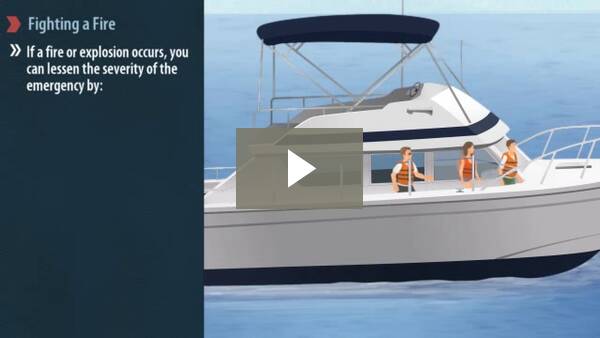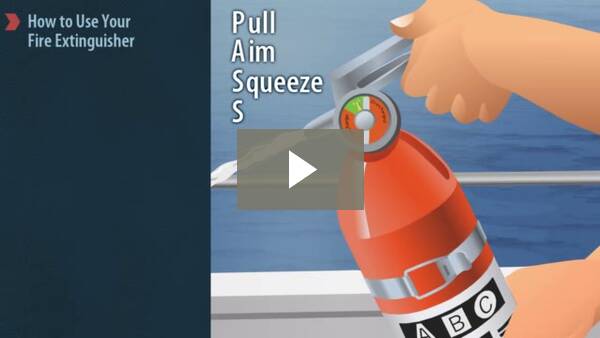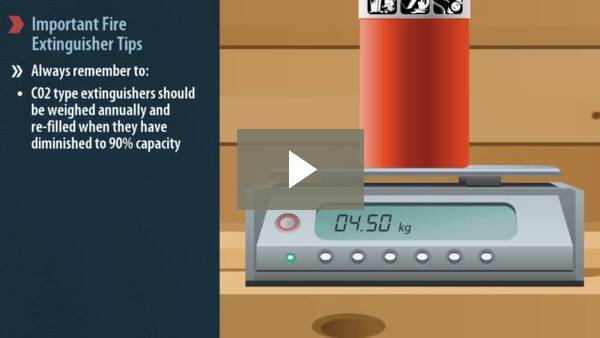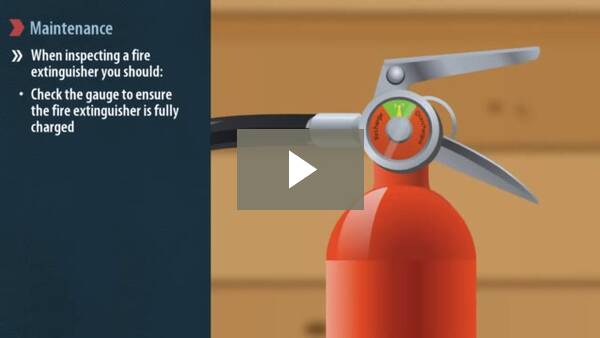Fighting a Boat Fire
Boat fires can be caused by a number of factors including engine malfunctions, a fire in the galley or insufficient ventilation of an enclosed engine compartment.
If boat fires or explosions occur, you can lessen the severity of the emergency by:
- Ensuring you have the mandatory fire-fighting equipment onboard
- Ensure fire-fighting equipment is maintained regularly, in good working order and is readily accessible
- Ensuring you and your passengers respond with speed and effectiveness
How to Use a Fire Extinguisher
Use the P.A.S.S. method to fight a fire on your boat:
- Pull the safety pin on the handle of the fire extinguisher
- Aim at the base of the flames
- Squeeze the handle
- Sweep the fire by spraying from left to right in a sweeping motion
Safe Boating Tip:
Ensure the extinguisher is suitable for the type of fire you are trying to put out. Stand at a safe distance from the source of the flame (at least 1 meter back).
Important Fire Extinguisher Tips
Always remember to:
- Use an extinguisher designed for marine use
- Use an extinguisher with an external gauge (that indicates the condition of the charge)
- Remember that the extinguisher should be turned upside down and shaken at least once per month to prevent the agent from clumping
- C02 type extinguishers should be weighed annually and re-filled when they have diminished to 90% capacity
- Be aware that CO2 and Halon type extinguishers utilize colourless, odorless gases that displace oxygen (proceed with caution if using or storing these type of extinguishers in an enclosed area)
- Always use a fire extinguisher to put out electrical (Class C) or flammable liquid (Class B) fires–never use water as it will spread flammable liquid fires and will conduct electricity
Maintenance
A dead fire extinguisher is useless. Monthly inspections are required to keep fire extinguishers in proper working order. When inspecting a fire extinguisher you should:
- Check the gauge to ensure the fire extinguisher is fully charged
- Look at the seals and hoses (if so equipped) and replace any that are cracked or broken
- Weigh extinguishers to make sure they meet the minimum weight levels stated on the label and recharge them if they contain less than 90% of their rated capacity
Using Fuel-Burning Appliances
Gas fumes, leaking propane and butane are heavier than air and will flow into the lower portions of your boat. These fumes are hard to remove and are highly explosive.
Be sure to follow these safety procedures when using butane and propane:
- Use fuel-burning appliances only in well-ventilated areas
- Secure gas cylinders, portable appliances and heaters so that unexpected movement doesn’t cause a leak
- Always attend to open-flame heating, cooking or refrigeration systems
- Install fuel burning equipment according to manufacturer’s instructions








